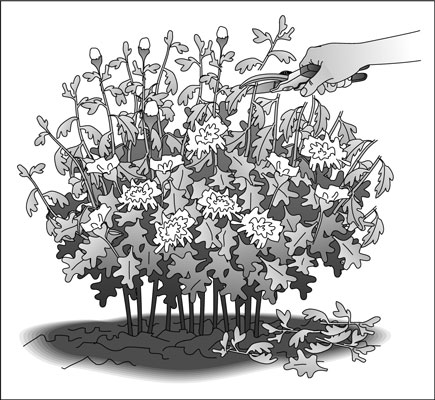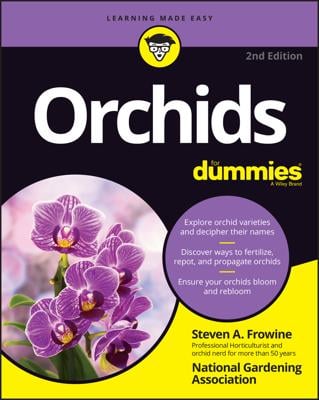Caring for established perennial is pretty simple. A 100- to 200-square-foot (9- to 18-square-meter) flower garden shouldn’t take more than a few minutes a week of tending, with a couple of hours of major cleanup several times a year.
Flowers in a vase eventually start to wither and die, and so do flowers in the garden as they age. Removing these crumpled corpses — called deadheading — serves several purposes:
Deadheading improves the look of the garden.
Most dead flowers form seeds. Some plants replace flowers with really attractive seedheads. But others scatter their seeds all over the garden, much like a dandelion does. You often wind up with dozens of baby flowers that you have to pull out to avoid ending up with a hundred daisies in one square foot of garden soil. Cutting off flowers before they form seeds prevents this maintenance headache.
Many perennials stop blooming after they form seeds. Removing the fading flowers before they can complete the process encourages the plant to continue blooming.
To deadhead, simply cut the dead flower off — using scissors for lightweight stems or pruning shears for heavy and thick ones. Cut the stem below the flower at the first leaves or flower bud you come to.
If you like your flowers really big, you may want to indulge in the practice of disbudding. Before the buds start to open, remove all but one or two flower buds on each stem. The plant then directs all its energy to the remaining buds, resulting in large flowers. Gardeners commonly disbud dahlias, chrysanthemums, peonies, and carnations.
Here are more things you can do with your pruning shears and scissors:
Pinching: To keep perennials denser and shorter, you may want to pinch or shear them, a couple of times early in the season. This process is called pinching because you can actually pinch off the top of each stem between your thumb and forefinger — but using scissors or pruning shears is quicker and easier.

Simply snip (or pinch) off the top few inches (8 cm or so) of the plant when it grows to a foot tall (30 cm) in spring and again in the middle of summer. Every stem you cut grows several new stems. The result is stocky sprays of more, but smaller, flowers. Chrysanthemums and asters are two perennials that are routinely pinched. Otherwise, they tend to get floppy.
Shearing: For a quicker alternative to pinching, use scissors or pruning shears to cut the top 6 inches (15 cm) off your plants a couple of times before midsummer.
Cutting back hard: When the directions for a plant tell you to cut it back hard, that means reduce the height of the plant by approximately one-third to one-half, using either scissors or pruning shears. Sometimes, hard pruning is recommended solely to improve the plant’s appearance, but it may also be necessary to renew a plant’s vigor.
Some perennials slouch and sprawl as badly as a group of teenage boys in the neighborhood park. When a large perennial leans over on top of smaller, weaker companions, the bully may steal all the sunlight or actually crush the little ones. Fortunately, you have many ways to prop up unruly (or just plain lazy) plants. Here are a few popular methods and devices for staking perennials:
Bamboo stakes: Bamboo makes good support for flowers with tall, single spikes — such as delphiniums and lilies. Wait until the stems are several feet tall and starting to form flower buds. Pound the stake several inches into the ground at the base of the plant and tie the stem loosely to the stake. You can also encircle wide multistemmed perennials with bamboo-type stakes and run twine around the circumference and back and forth across the center a few times to make sort of a net — this way, the stems can grow through the twine and be supported.
Branches: When you prune shrubs, save any trimmings that are 2 to 3 feet (60 cm to 1 m) long and brushy at one end, resembling brooms. When a perennial reaches about a foot tall, poke several of these branches — bushy side up and leaning slightly inward — into the ground around the plant. As the stems grow up through this circle of branches, the supporting mechanism is hidden by the perennial’s foliage.
Commercial supports: You can buy artistic metal supports from garden centers and nursery catalogs.

